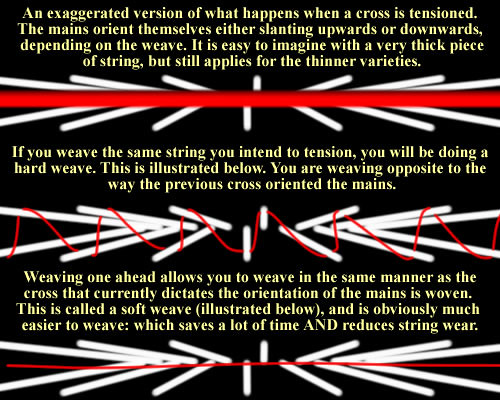You don't need a stringers clamp. See "#8" below for the answer in a video. YULitle shows the use of a starting clamp there, but it isn't necessary.
I'd view and read everything now. Don't get lazy with that. It'll save you time and headaches in the future. Work through it in your mind.
A quick rundown, in general, what you need to do again:
I'm assuming from this point that you done your maintenance--most importantly cleaned the clamps and tensioner (assuming they still grip fine) and you've calibrated the tension. How to do this is mentioned all of the time on TT. You may have already been asking about this, if I remember correctly.
Go to this youtube site. It's the channel for the famous YULitle ones I think you've watched:
http://www.youtube.com/yulitle
Make sure to watch these videos and perform in this order (some videos are specific ways to perform the necessary action). They will be a generalization in terms of equipment, as you said you'll be using an old crank model.
If your racquet is still strung:
Cutting Strings out of a Racket
STRINGER USE:
1. Mounting - 6-Point
2. Swivel Clamps - Use and Operation
MAINS:
3. Getting Mains Started - Two-piece
4. How to Start Your Mains
5. Parnell Knot (To tie off)--see #6
6. How to tighten your knots (shows parnell in example)
CROSSES:
7. Bulky (starting) knot (there are others on the site--try this one)
8. Starting Crosses with a Starting Knot (note: YULitle weaves his second cross first in the video, then weaves the first cross and puts string through the grommet where he will tie the starting knot around the main. Then he ties the knot, tightens it, and pulls tension.
9. Intro to Main Skips and Cross Weaving
10. How to Pass String thru Blocked Grommets
11. Why to Pull Hard Weaves Twice
12. Weaving Crosses
13. Parnell Knot (To tie off)
14. How to tighten your knots
15. Mounting - 6-Point (remove the racquet properly)
A note on tools: You didn't mention what stringing hand tools you have. If there are none there, you might want to at least get yourself a set of mini-pliers (any store with hardware--prices vary--not expensive). A set with diagonal cut, flat nose, bent, and needle nose are nice. The second two usually have a smooth grabbing surface and no wire cutter to accidentally cut or tear up the string. An awl may or may not be necessary. I have one, but I never use it (see #10 above). I also have a pathfinder awl (don't use). I do use a pair of micro flush cutters to cut the extra length of tails from my knots. And get a ruler, or better, a wide measuring tape or yard stick. Or make one on a roll of paper you can tape down. For some reason, I see questions about measuring on this board where some say they can't or hate measuring

I do know people who have trouble with this, in general :shock: .
I don't know your machine or if this will help, but here is a manual for a particular crank machine:
http://www.sptennis.com/stringer.asp#JAZZ
Find the "Download Owner's Manual" and save it or open it. Needs Adobe Acrobat Reader. You'll have to compare. Just something extra as a visual aid in figuring this stuff out. I don't use a crank. I'd have no idea anyway with the description, "old czech tension machine." Other directions in the manual are usable, too, such as some basic knots (not the same ones as noted above). See "Tension Calibration" on page 12. Tennis warehouse:
http://www.tennis-warehouse.com/descpage-TENCAL.html for a calibrator.


